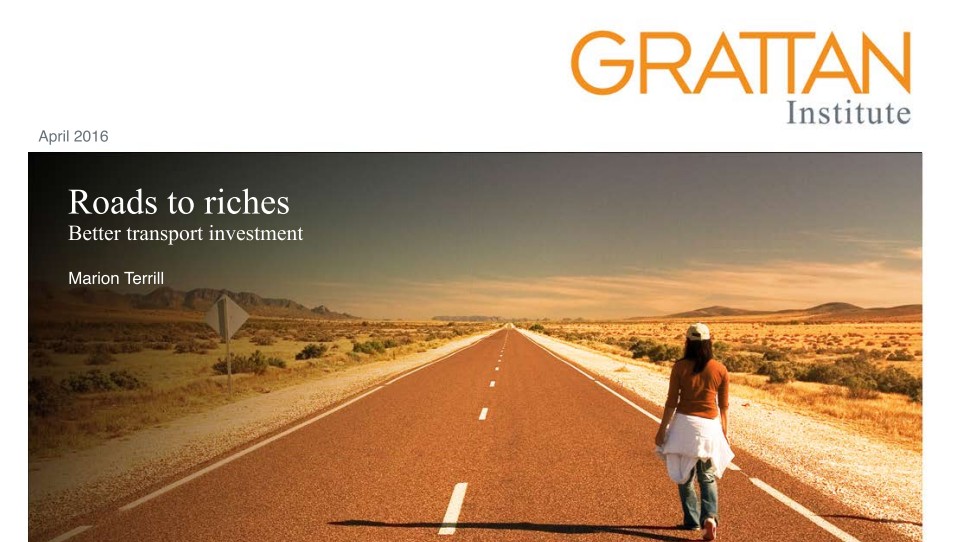1740 results found
Featured results



More results
This publication provides examples of how the ADB supported communities in the Shanxi province and met the rising challenges in water security, food production, and climate issues.

This paper assists project teams in managing climate change risk in the context of water supply and sanitation investment projects.

On 27 January 2016, the Global Infrastructure Hub was represented by Senior Director, Richard Timbs, at the global launch of the International Infrastructure Support System (IISS) at the Inter-American Development Bank in Washington.
To attract the trillions of dollars needed in infrastructure investment to fuel global growth and create jobs, we need better information about what’s working and why.
This publication aims to link the study of urban environmental issues with the advancement of more sustainable urban growth, the report looks at Kampala and Uganda including their background in the context of urban development and drivers of environmental sustainability.

PFRAM is a tool that assesses potential fiscal costs and risks arising from PPP projects.

This publication examines the direct and indirect benefits of public investment if carried out in a clean and efficient manner. It provides a Framework for Integrity in Public Investment, mapping out risks of corruption at each phase of the investment cycle. It also identifies tools and mechanisms to promote integrity in the public investment cycle and provides examples of their successful implementation in both the public and private sectors.


The present study Review of success stories in urban water utility reform was commissioned in 2015 as a follow-up to an independent evaluation of SECO s Corporate Development activities.

In 2015, SECO undertook a Review of Success Stories in Urban Water Utility Reform. Key tables and diagrams from the Review are presented in this document – forming a tool for analysis and dialogue.

In 2015, SECO undertook a Review of Success Stories in Urban Water Utility Reform. Key tables and diagrams from the Review are presented in this document forming a tool for analysis and dialogue.

Finance ministry and central bank officials at the February Asia-Pacific Economic Cooperation (APEC) meeting in Peru called for closer collaboration with the Global Infrastructure Hub (the GI Hub) at a session focussed on strengthening public policy in the Asia-Pacific region.
Global Infrastructure Hub is pleased to announce that it has signed a Memorandum of Understanding (MOU) with the Inter-American Development Bank (IDB). The memorandum reflects our organisations’ shared intentions to explore opportunities for cooperation and collaboration, and increase the effectiveness and efficiency of work programs through knowledge sharing, consultation and advice.

The document provides a guidance for planning investments by the Government. The Governments currently cherry-pick the evaluation method that suits the result they want.



The UNECE International PPP Centre of Excellence has as its core vision the implementation of PPP solutions to promote the United Nations Sustainable Development Goals (SDGs).


The report first gives background information on infrastructure prioritization in Panama, then follows with a description of the IPF in technical and implementation terms.
This report examines the performance of the 14 largest container ports in the region based on two sets of criteria: operational performance and economic performance. To measure operational performance, the report benchmarks total time at port, waiting time at port, and idle time as a share of total time at berth. To measure economic performance, it benchmarks productivity and efficiency using two useful techniques: Malmquist total factor productivity decomposition and data envelopment analysis. The report identifies key drivers of port performance and examines how differences in performance across ports are related to those drivers.

This guidance tool has been developed for governments that wish to enhance the viability of their PPP infrastructure projects.

This book describes some key global water challenges, perspectives for remote sensing approaches, and their importance for water resources-related activities. It presents eight key types of water resources management variables, a list of sensors that can produce such information, and a description of existing data products with examples.

Speaking before the G24 forum of developing countries in Colombia, the Global Infrastructure Hub called on public and private sector actors to increase efforts to understand each other’s priorities in order to structure infrastructure projects that can attract private financing.









